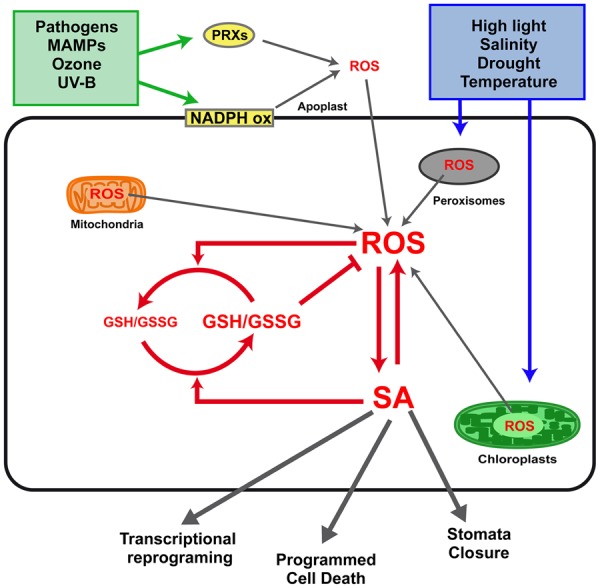FIGURE 1.

Interplay between salicylic acid (SA), reactive oxygen species (ROS), and glutathione (GSH) in defense responses to biotic and abiotic stress. Stress conditions such as infection with pathogens, exposure to microbe-associated molecular patterns (MAMPs), ozone, and UV-B treatments, trigger ROS production mainly at the apoplast. This production of ROS is mediated by plasma membrane NADPH oxidases (NADPH ox) and cell wall peroxidases (PRXs). Other stresses, such as high light radiation, salinity, drought, and temperature, trigger ROS production mainly at the chloroplasts and peroxisomes. Mitochondria have been also described as an important source of ROS during defense responses (Lam et al., 2001). A feed-forward loop between H2O2 and SA synthesis occurs in response to stress, as described in the text. SA also has an antioxidant role, increasing GSH levels and reducing power, which in turn is involved in ROS scavenging. Finally, the interplay between intracellular levels of SA, H2O2, and GSH determines transcriptional reprogramming, programmed cell death, and stomata closure, the three main outputs of the defense responses.
